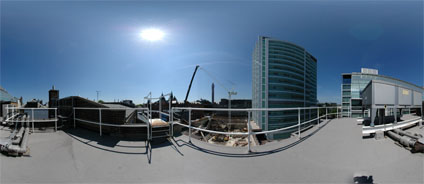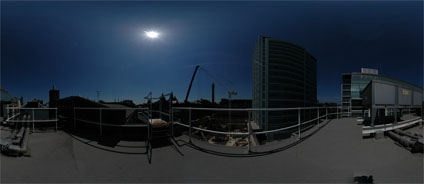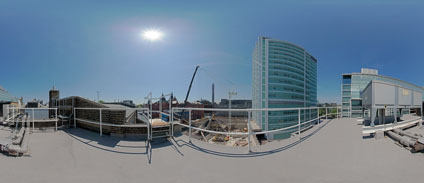The quality of the image is further restricted by the cameras limited dynamic range when compared to the human eye - resulting in panoramas which often do not represent how the eye would naturally view a scene. To counter this we can use High Dynamic Range (HDR) imaging to capture a scene over a known number of exposure settings and thus create a series of images that reflect the dynamic range closer to that of human vision.
In our first test we have captured a view from the roof of University College London on a clear sunny day. This would normally result in dark shadows in sections of the image due to having to average the exposure over the whole panorama. A standard capture technique would result in the image displayed below:

If we then capture a further two versions of the scene - both under and over exposed respectively - we can capture a wider dynamic range:


Using HDR software these images can then be Tone Mapped to create a final view which includes both the shadows and the highlights of the scene:

A total of 21 images were captured to create the panorama compared to the normal 6 for traditional techniqes.
View the final HDR panorama (2.2mb).

The stuff on your blog is great! I'm doing a night time shoot on a roof in London and the information here has been really helpful. I've done HDR images before but not as a panoramic so maybe I'll try that too!
ReplyDelete